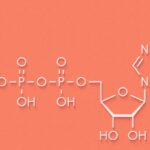We explain what fermentation is, what types of fermentation can be used and the different uses it has.

What is fermentation?
It is called fermentation an incomplete oxidation process which does not require oxygen to take place, and which produces an organic substance as a result. It is a catabolic type process, that is, the transformation of complex molecules into simple molecules and generation of chemical energy in the form of ATP (Adenosine Triphosphate).
Fermentation consists of a process of glycolysis (breakdown of the glucose molecule) that produces pyruvate (pyruvic acid) and that, lacking oxygen as a receptor for the excess electrons of the NADH produced (nicotine adenine dinucleotide), uses an organic substance for this purpose. which must be reduced to reoxidize NADH to NAD+, finally obtaining a derivative of the initial substrate that is oxidized. Depending on said final substance, there will be different types of fermentation.
This process It was discovered by the French chemist Louis Pasteur who described it as “Life without air” (The life sans l'air), since it can be carried out in the absence of oxygen by microorganisms such as bacteria, yeasts, or some metazoans and protists. In this process, then, neither the mitochondria nor the structures linked to the cellular respiration process intervene.
Compared to aerobic respiration, fermentation It is not a very efficient method of obtaining energy: Only 2 molecules of ATP are produced per molecule of glucose consumed, while breathing produces 36 to 38.
However, this process is carried out by various cells in our body to cover the moments of absence of oxygen, as occurs in muscle cells that ferment glucose when the oxygen intake is not enough to continue breathing.
See also: Hydrolysis
Types of fermentation
According to the substance obtained at the end of the fermentation process, we can classify it into:
- Alcoholic fermentation. It is a process carried out mainly by yeast, in which a quantity of alcohol, ethanol, carbon dioxide and ATP are produced from certain sugars. This is the process used to produce alcoholic beverages.
- Acetic fermentation Own bacteria of the genus Acetobactertransforms ethyl alcohol into acetic acid, that is, alcohol into vinegar. It is, however, an aerobic process, so it can occur in wines exposed to air.
- Lactic fermentation It consists of a partial oxidation of glucose, carried out by lactic acid bacteria or by animal muscle cells (when they run out of oxygen to breathe). This process generates ATP but produces lactic acid as a byproduct, which, when accumulated, produces the painful sensation of muscle fatigue.
- Butyric fermentation It consists of the conversion of glucose into butyric acid and gas, the latter giving it a typically unpleasant odor. It is characteristically carried out by bacteria of the genus Clostridium and requires the presence of lactose.
- Butanediolic fermentation This is a variant of lactic fermentation, carried out by enterobacteria that release carbon dioxide and generate butanediol, a colorless and viscous alcohol.
- Propionic fermentation Acetic acid, carbon dioxide and succinic acid intervene in this process. Propionic acid is obtained from all of them, a corrosive substance with a pungent odor.
Uses of fermentation

Numerous industries built by humans take advantage of fermentation to obtain certain substances. For example, in the cheese food industries, propionic fermentation processes are carried out, or in the preservation of many types of foodstuffs, the presence of lactic acid is used, which acts as a preservative, due to lactic fermentation.
Something similar happens with the alcohol industry, whether wines, beers or other types of liquors, which require a production process in which alcoholic fermentation intervenes. On the other hand, if some liquors such as wine are left uncovered for a long time, the added oxygen will start acetic fermentation and the drink will begin to turn sour.
Continue with: Catabolism





